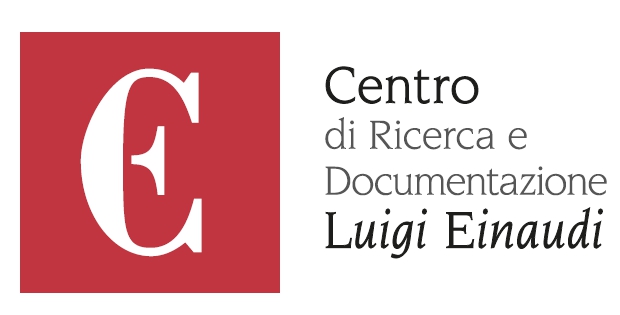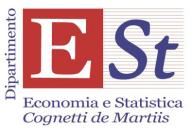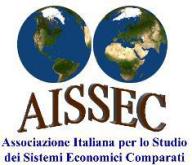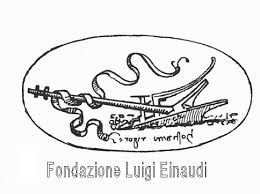by Andrea Pronti, Elena Vallino and Massimiliano Mazzanti[1]
Robust and effective water management policies will be crucial for water security and global water issues in the next future. An efficient and socially fair use of water resources is indeed important for sustainable development, in particular if considered within the water-food-climate nexus theoretical framework. Beside the necessary condition of having availability of water resources, water governance and management are crucial elements for ensuring efficient, sustainable and productive water use for human communities. In our research work we aim at exploring at an empirical level the determinants of the diverse quality levels of water governance in the different countries.
The issue is highly relevant considered that a dramatically high number of individuals in the world experience situations of so-called economic water scarcity. Such condition occurs in areas in which there is a high level of water availability according to the main hydrological indicators, but people face severe difficulties in the sustainable use of water resources for livelihood purposes (Molden 2007, FAO 2012), because of a wide spectrum of complex reasons, from the lack of infrastructures to institutional inefficiencies (Marson and Savin 2015, Vallino et al. 2020). This contributes to the creation of water insecurity, that, according to Molden (2007), emerges when individuals lack secure access to safe and affordable water to consistently satisfy their needs for drinking, washing, food production, and livelihoods. UNDP (2006) estimated that about 1.2 billion people live in areas of physical water scarcity, while 1.6 billion people live in basins that face economic water scarcity. Notably poor people suffer the most from symptoms of scarcity and large structural inequalities are persistent. About a third of the people without access to an improved water source lives on less than $1 a day. Twice this share lives on less than $2 a day. More than half of the 1.1 billion people without access to safe drinking water is in the poorest 40% of the income distribution, while the association between poverty and lack of water for sanitation is even stronger (UNDP 2006). Clearly there are complex feedback loops between poverty and lack of water. The issue is relevant for many regions of the world. For example, in the Central African region water stress is inexistent according to current hydrological definitions, however indicators on water use and agricultural performance have low values. In Central Asian countries figures on water use in irrigation per hectare are relatively higher but disinvestments in the irrigation infrastructure led to high levels of waste of water resources and to environmental and economic damages in agriculture (UNDP 2006).
Several indicators of physical water availability are available (water scarcity, water stress, percentage of renewable water resources, data on transboundary water resources, on water inflows and outflows, on surface and groundwater, among others) (Schyns et al. 2015), however measuring economic water scarcity is challenging. We utilize the Sustainable Development Goal Indicator 6.5.1 (“Degree of implementation of Integrated Water Resource Management – IWRM”) as indicator of the level of engagement against economic water scarcity in a country. The IWRM indicator provides information at a national level on legislative, managerial and financial environment for water management, on agreements for the management of transboundary watersheds and rivers and on stakeholders participation processes, covering 90% of the countries in the world. It is based on the responses to 33 questions in a country self-assessment questionnaire, and it is constructed on a scale from zero to 100, depending to the estimated degree of IWRM implementation. We exploit the data waves of 2017 and of 2020 (UN Environment, 2018).
The correlation between the country’s income and IWRM is present but it is far from perfect, with interesting cases of low-income countries performing fairly well in the IWRM level and high-income countries with only medium degree of IWRM. Therefore, we hypothesize that the Gross Domestic Product apparently is not the only crucial driver for investments in water governance. Similar dynamics hold for the correlation between the Human Development Index (HDI) and the IWRM. On the other hand, we observe that water availability loosely influences the IWRM level, leading to the consideration that more complex political and economic variables may determine the country effort on water governance and management. At the same time researches show that having a more sophisticated level of water governance has a positive effect on water consumption for the production of the most important agricultural products, leading to more efficient solutions from the point of view of water footprint (Vallino et al. 2020).
In order to empirically explore the determinants of IWRM we rely mainly on the World Governance Indicator (WGI) and its sub-components, and on the Notre Dame Global Adaptation Initiative index (ND-Gain index). The WGI provides information on the quality of government and institutions and it is produced by the World Bank, covering more than 200 countries and territories. The aggregate indicators are based on a high number of underlying variables, which, in turn, are taken from other existing data sources. The data report the views on governance of survey respondents from public, private, and NGO-based institutions worldwide. The main components of the WGI are “voice and accountability”, “political stability and absence of violence/terrorism”, “government effectiveness”, “regulatory quality”, “rule of law”, and “control of corruption” (The World Bank, 2023). The ND-Gain Index is composed of a “vulnerability” score and a “readiness” score as composite indicators using 36 sub-indicators (University of Notre Dame, 2023). In turn, the “vulnerability” components are made by the following groups of sub-indicators: “exposure” (the level to which an area is exposed to climate change shocks from a biophysical perspective), “sensitivity” (the level to which a country depends on a particular sector negatively affected by climate change, or the percentage of the population vulnerable to climate change shocks), and “adaptive capacity” (the disposal of socio-economic resources for adaptation in specific sectors). The “readiness” components are: “economic readiness” (the capacity of a country’s business environment to absorb investments that either reduce sensitivity to climate shocks or improve adaptation), “governance readiness” (institutional factors that enhance the application of investment for adaptation initiatives), and “social readiness” (information about social inequality, ICT preparedness, education and innovation environments that may enable investments in adaptation directions). Further we utilize a set of control variables, such as GDP per capita, water resources per capita, water efficiency, water stress, percentage of population with access to basic sanitation, percentage of population with access to drinking water, percentage of population with undernourishment, percentage of rural population, percentage of land equipped with irrigation, disbursement of aid for agriculture (DFA, containing the information of disbursement for environmental protection), Agricultural Orientation Index (AOI: relation between share of aid to agriculture and relative contribution to agriculture to GDP) (FAO, 2023).
We used an OLS estimation for analyzing the factors influencing the IWRM index using three equations. In the first we utilize the composite WGI, in the second we use the single WGI indexes, and in the third we use the ND-Gain Index. Preliminary findings suggest that, considering the composite WGI, the World Governance Indicator is not statistically significant for OECD countries, for which GDP seems to play a stronger role. It gains again significance for non-OECD countries and even more for low-income countries (non-OECD without BRICs). For this last group of countries, it seems that institutions play a larger role than GDP in influencing the IWRM level. Apparently there is a negative relation between water per capita and IWRM, even for poorer countries. We identify a positive correlation between water efficiency, water sanitation and IWRM, suggesting potential reverse causation mechanisms that require further investigation. Moreover, it seems that countries with low IWRM, and are more in need of support from cooperation, receive more aid in environmental domain. Additionally we observe that the higher the Agricultural Orientation Index (AOI), the higher the IWRM. If the WGI is decomposed and if we consider the model with all countries, we notice that only “government effectiveness” and “control of corruption” are statistically significant. If we consider non-OECD countries, only “control of corruption” and “rule of law” are significant. The Notre Dame Gain Index is significant with positive sign: the higher the country vulnerability to climate change and the higher is its readiness, the higher the IWRM. Water per capita and water stress keep significance with positive sign along the three models, showing a stable behavior. The relation of the IWRM and the country behavior in engaging in environmental treaties and agreements (“Quality of Governance Indicators” dataset, University of Gotheborg) will be further explored. Preliminary results suggest therefore that institutions play a larger role than country income in determining high levels of water management and governance, especially in low- and middle-income countries.
References
FAO (2012). Coping with water scarcity: an action framework for agriculture and food security. Food and Agriculture Organization of the United Nations, Rome.
FAO (2023), FAOSTAT dataset, https://www.fao.org/faostat/en/#home
Marson, M., & Savin, I. (2015). Ensuring sustainable access to drinking water in Sub Saharan Africa: Conflict between financial and social objectives. World Development, 76, 26-39.
Molden, D. (Ed.). (2007). Water for food water for life: A comprehensive assessment of water management in agriculture. International Water Management Institute.
Schyns, J. F., Hoekstra, A. Y., & Booij, M. J. (2015). Review and classification of indicators of green water availability and scarcity. Hydrology and Earth System Sciences, 19(11), 4581-4608.
The World Bank (2023), World Governance Indicators, www.govindicators.org
UN Environment. (2018). Progress on integrated water resources management. Global baseline for SDG 6, Indicator 6.5. 1: Degree of IWRM implementation.
UNDP (2006). Human Development Report 2006-Beyond scarcity: Power, poverty and the global water crisis.
University of Notre Dame (2023), Notre Dame Global Adaptation Initiative, https://gain.nd.edu/our-work/country-index/
Vallino, E., Ridolfi, L., & Laio, F. (2020). Measuring economic water scarcity in agriculture: a cross-country empirical investigation. Environmental Science & Policy, 114, 73-85.









